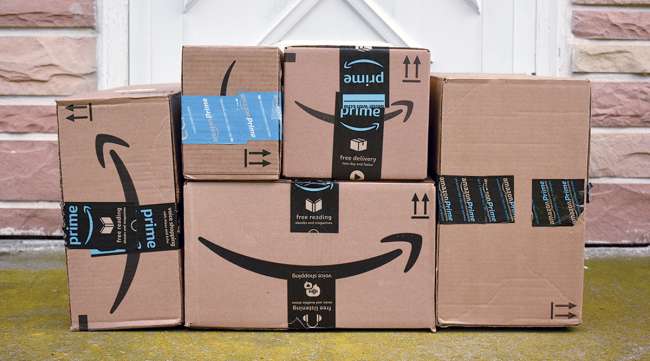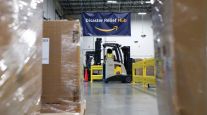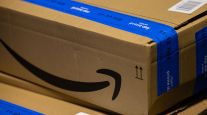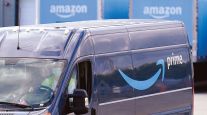The Rise of Amazon Logistics

In his 2017 annual shareholder letter, Amazon.com CEO Jeff Bezos lauded “divinely discontent” customers as innovation drivers. This is how he described their impact (emphasis added):
“It may be because customers have such easy access to more information than ever before — in only a few seconds and with a couple taps on their phones, customers can read reviews, compare prices from multiple retailers, see whether something is in stock, find out how fast it will ship or be available for pickup and more. These examples are from retail, but I sense that the same customer empowerment phenomenon is happening broadly across everything we do at Amazon and most other industries as well. You cannot rest on your laurels in this world. Customers won’t have it.”
FREE SHIPPING: Amazon offering free holiday shipping to compete with Target
2018 TOP 100 PRIVATE CARRIERS: See the new rankings
LIVEONWEB: Watch "Orchestrating the Supply Chain"

Buchman
The bolded line is key, explaining why Amazon’s acquisitions have shaken markets — the Whole Foods acquisition prompted a $12 billion drop in grocery shares and the PillPack acquisition triggered a $15 billion pharmaceutical share drop. Consumer retail may have taken the first hit, but customer expectations are upping the ante in every vertical. Not even business-to-business commerce is spared from these changing expectations.
Freight industry executives likely sighed with relief when an update of Amazon’s logistics.amazon.com page on June 28 turned out to be nothing more than a franchise model for courier delivery services. In other words, last month’s announcement was a stay of execution, not a reprieve, and it’s only a matter of time before Amazon reveals plans for a comprehensive logistics network.
Amazon is at the nexus of e-commerce, data and logistics, with a drive to constantly improve its logistics network. According to its 2017 annual report, more than a quarter of Amazon’s third-party sales (which represent half of Amazon’s sales) are cross border. Fulfillment and global logistics is increasingly a goal in and of itself. The company’s early 2018 competition assessment noted that “companies that provide fulfillment and logistics services for themselves” are competition. In other words, if you’re shipping your own goods, you’re competition.
But two other angles spell out Amazon’s broader logistics play even clearer:
• Amazon’s global logistics footprint.
• Amazon’s logistics hiring plans.
The global logistics footprint
At more than 243.5 million square feet, if all of Amazon’s distribution and fulfillment space were laid out side by side, it would spread across a quarter of Manhattan. That’s 258 operational facilities in the United States and another 486 distributed around the world.
In the United States, this sprawling network is defined by a range of different services, from Prime Now hubs near urban centers to fresh food and Whole Foods delivery goods, and, of course, fulfillment, sortation and delivery stations. Amazon also operates nine inbound cross-dock centers, used to consolidate or break imported shipments and then funnel them to the relevant fulfillment centers. Across 20 additional countries, Amazon’s other centers are predominantly focused on fulfillment and delivery stations, while some countries, such as Italy, the United Kingdom, Germany, France, Spain, Singapore and Japan also have Prime delivery facilities.
Let’s talk about trucks, planes and ships
Amazon’s trucking fleet is expanding rapidly; it launched in 2005 with the purchase of thousands of trailers used to shift goods between fulfillment centers. While industry chatter claims that Amazon may have as few as 300 actual power units, there is talk of aggressive recruitment for fleets with their own power units to move the trailers purchased in the past.
Amazon Air (once called Prime Air) boasts a fleet of 32 Boeing 767-300s, on track to grow to a sizable 40-aircraft fleet. By comparison, that’s almost as large as the 15th largest U.S. passenger fleet. Not huge, but it’s only going to grow. The planned 210-acre Amazon airport in Kentucky will support up to 200 flights daily.
There’s been less progress, though, with ocean freight since Amazon registered as a freight forwarder several years ago. That’s not to say Amazon isn’t staffing up; it recently snagged the former CEO of UTi, once a top-20 global freight forwarder, to run its logistics program. And the career data below spells out a strong ocean slant.
Amazon Fulfillment
Most of the attention so far has been on fulfillment. That’s not surprising, given that Amazon’s shipping costs grew from $11.5 billion to $21.7 billion between 2015 and 2017. Last year, fulfillment accounted for 14.2% of net sales, up from 12.5% in 2015.
Industry estimates still peg Amazon as delivering some 5-10% of its goods itself, complemented by a range of courier partnerships (perhaps, soon to become direct competition) and their now famous (or infamous) relationship with the U.S. Postal Service.
As expected from Amazon, there are a number of other highly innovative (and slightly crazy ideas) in motion too, such as crowdsourced deliveries from external contractors (more on Flex’s development below), delivery to car trunks, remote door access to Amazon couriers, Amazon lockers, apartment hubs and dozens of drone delivery patents. The aforementioned franchise delivery business model recently joined the rank of Amazon delivery, giving Amazon the ability to grow its own courier network without having to shoulder too much of the financial burden. Amazon has also been rolling out more consumer-facing tracking capabilities with an app for U.S. customers to track exactly where their package is every step of the way.
With such an extensive delivery footprint, it’s no surprise Amazon is contemplating productizing its pickup and delivery service in the shape of Shipping With Amazon, a third-party delivery service.
But all of this was already known. What about how Amazon’s logistics plans play out in plain view ... on its career site?
Amazon logistics hiring plans
Amazon currently lists about 17,700 full-time vacancies on its website, including about 920 in the logistics and transportation sector. In other words, about 5% of Amazon jobs are in logistics.
Interestingly enough, some past Freightos research found that a similar 5% of jobs at enterprise logistics providers are in the information technology sector.
About half of these jobs are in the United States, and half of them based out of Amazon’s Seattle headquarters.
With Amazon’s global footprint, it wasn’t surprising to find out that it has logistics positions open in 23 countries.
Going more senior
More than half (60%) of the advertised senior vacancies require at least four years of experience. That’s not to say that experienced logistics services aren’t in demand — more than 10% stipulate at least seven years of experience. Diving into the senior positions a little further, it became clear exactly where the company is moving — cross-border trade and international logistics, while improving courier delivery.
The lion’s share of the 14 jobs requiring more than 10 years of experience are either technology related, like a principal machine learning scientist, or long-distance freight, whether it’s a European Union supply chain program manager, a senior intermodal manager or a principal for Amazon Global Logistics’ cross-border unit.
There are also four non-assistant logistics roles in Amazon’s secretive Lab126, responsible for Amazon’s in-house devices such as Kindle and Echo. These positions are focused on operational roles for rapid manufacturing, inventive packaging and fulfillment. However, logistics positions at Lab126 are few and far between, at just 1% of the open jobs there (compared with a baseline company rate of 5%).
There are also a number of positions open on the Flex team, mostly in software and operations roles. The open positions indicate a growing importance in Flex’s deliveries, across new geographies, larger package sizes and rush shipments, whether Prime Now or restaurant deliveries. There’s also a growing emphasis on communication for both delivery teams and consumers with Flex, as well as onboarding of new Flex delivery staff, delivery scheduling and more.
Global freight
Air freight figures prominently in job descriptions, with 105 mentioning air shipping. This stands to reason, as Amazon’s air freight business is very much operations-focused — shift manager, area managers, etc.
Only three logistics job descriptions explicitly mention ocean freight, backed by 10 research and development jobs related to inbound ocean freight, as well as a customer service role. However, the three ocean freight roles are all pivotal and have all been posted in the last couple of months.
With nearly 1,500 job roles across all departments for the keyword of “import” (8% of the total jobs on the website), 110 for cross-border and about 70 for cargo or freight, Amazon’s evolution into a comprehensive global supply chain is now an inevitability. Bezos has repeatedly demonstrated that providing a stellar customer experience means taking full control.
So where does that leave logistics companies? Few operate at the same scope as Amazon’s level of business. But most do already have expertise, physical networks and internal technological capabilities to differentiate. Doubling down on improving user experience had recently become the way to stay ahead. But now, it’s looking like the way not to fall behind.
Eytan Buchman is vice president of marketing at Freightos, a technology firm based in Hong Kong that provides online pricing and automation tools for freight forwarding firms.




